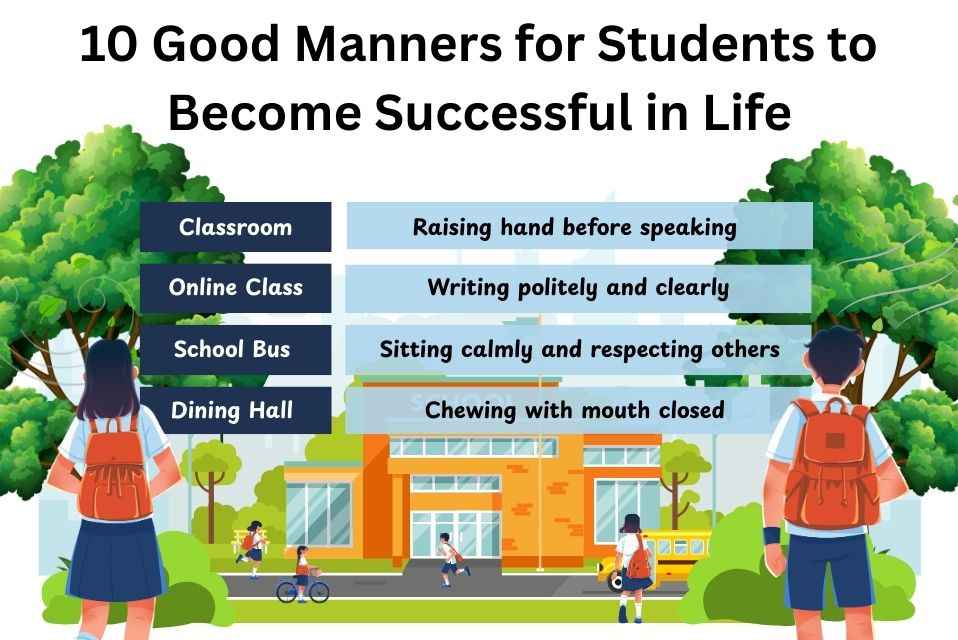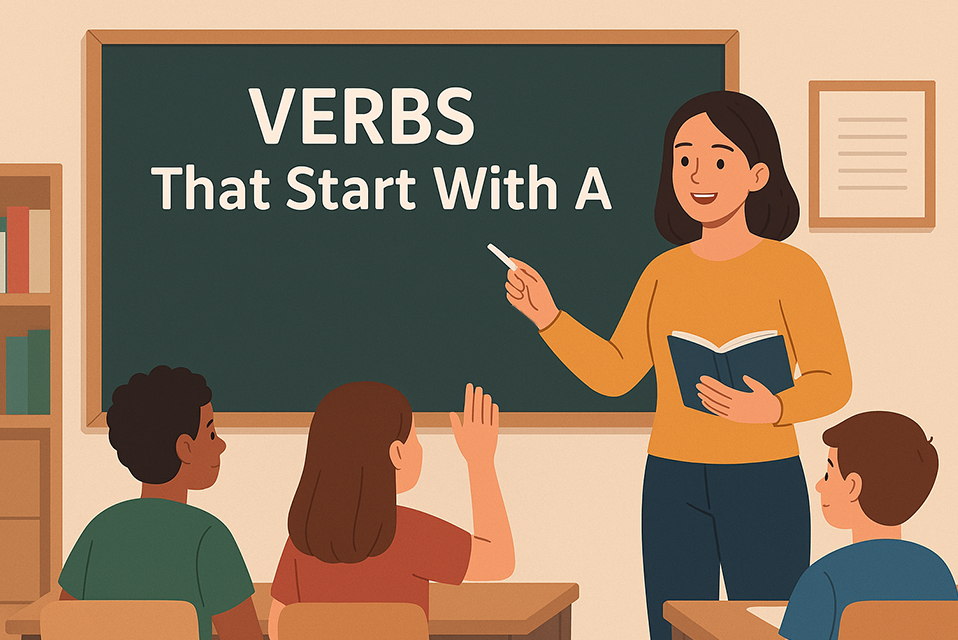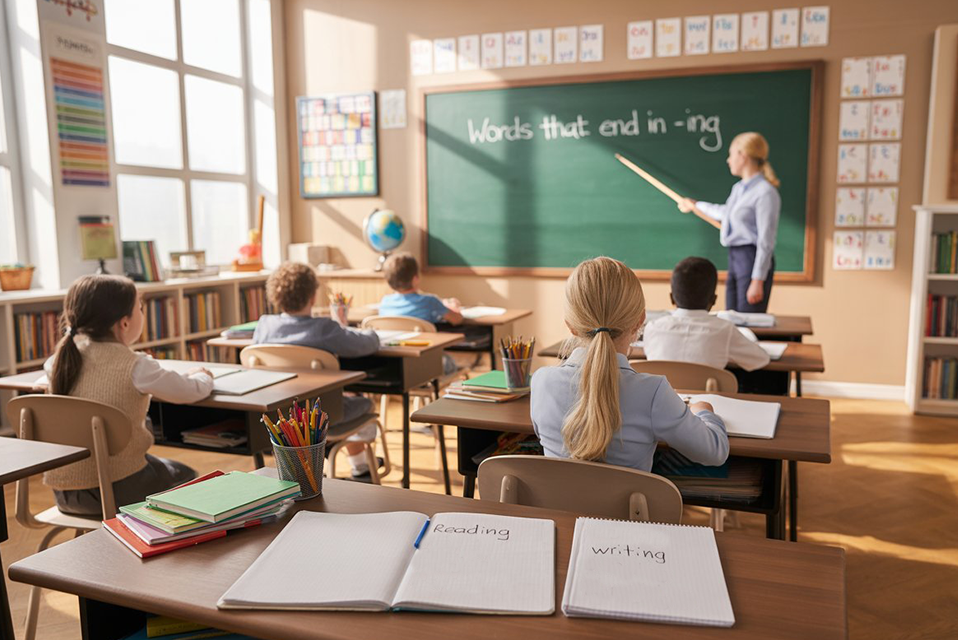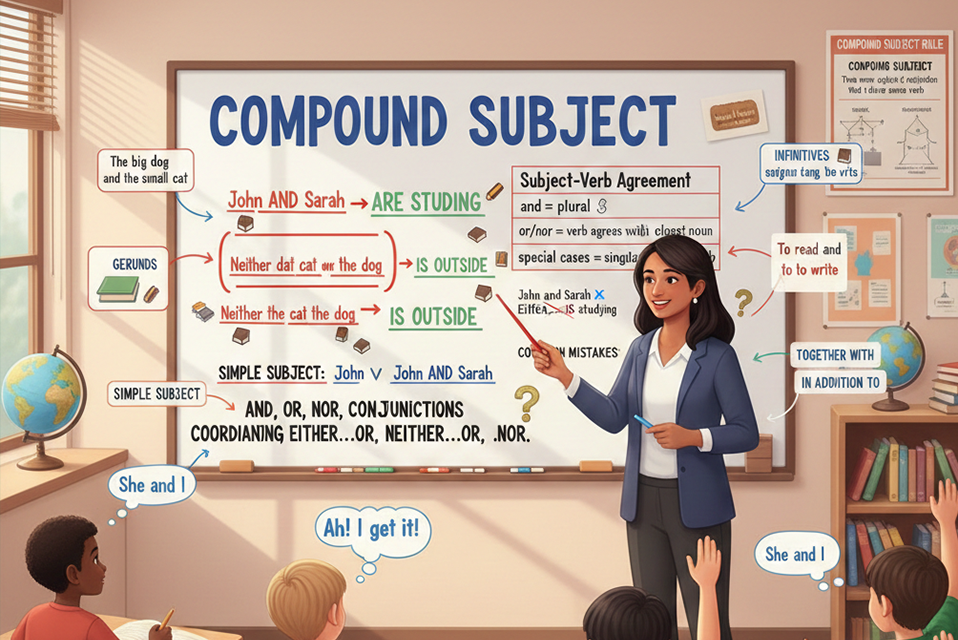Good manners are the invisible threads that hold a community together. For students, these threads become even more important because schools are not just places to learn formulas and theories they are spaces where children grow into responsible, empathetic, and well-rounded individuals. Practicing the 10 good manners for students to become successful in life, such as greeting teachers politely or showing respect during morning assembly, helps build character and prepares them for success beyond academics.
While academics shape a student’s knowledge, good manners shape their character, confidence, and social behavior. From greeting teachers with respect to practicing digital etiquette in online classes, the 10 good manners for students play a vital role in preparing children for both academic success and life beyond school.
In this comprehensive guide, we’ll cover the 10 most essential good manners for students, explore their importance, and provide practical tips for parents and teachers on how to instill them effectively.
Why Good Manners Matter in School Life
Education today has moved beyond just textbooks. Schools now emphasize holistic development, which means building not only intellectual skills but also emotional, social, and ethical values.
Here’s why good manners matter for students:
- Build Respectful Relationships – Students who practice politeness and respect create stronger bonds with teachers, classmates, and staff.
- Develop Empathy and Kindness – Using words like “please,” “thank you,” or “sorry” teaches children to care about others’ feelings.
- Promote Discipline and Responsibility – Punctuality, cleanliness, and accountability prepare students for future challenges.
- Shape Lifelong Values – Manners learned in school stay with students throughout their careers and personal lives.
- Create Inclusive Environments – Respect for diversity, boundaries, and cultural differences makes schools welcoming for everyone.
The 10 Good Manners Every Student Should Learn
Here are the 10 most important good manners for students, explained with real-life examples and teaching tips.
1. Respecting Teachers and Classmates
Respect is the foundation of all manners. Students should greet teachers, listen without interrupting, and value the opinions of classmates. Respecting school staff, such as bus drivers or janitors, is equally important.
Example:
Saying “Good morning, ma’am” when entering class.
2. Using “Magic Words”
The words please, thank you, sorry, excuse me, and you’re welcome are often called “magic words.” They are simple but powerful tools for building trust and kindness in everyday situations.
Example:
Saying, “Could you please pass the salt?” instead of demanding it at the lunch table.
3. Listening Attentively
Students who listen carefully to instructions, lessons, and peers demonstrate respect and patience. It also improves concentration and learning outcomes.
Example:
Raising a hand before speaking instead of interrupting during a discussion.
4. Being Punctual
Punctuality reflects discipline and time management. Arriving on time for school, assemblies, and group projects shows reliability and respect for others’ time.
Example:
A student who consistently reaches class before the bell sets a positive example for others.
5. Practicing Digital Etiquette
In today’s world of online classes and social media, digital manners are as important as classroom behavior. Students must learn to write respectful emails, avoid gossip online, and use technology responsibly.
Example:
Writing a professional email like “Dear Teacher, I could not attend class yesterday…” instead of sending casual slang messages.
6. Helping Others
Offering help to peers develops teamwork and compassion. Students should be encouraged to share notes, assist with projects, or help younger classmates.
Example:
Saying, “Would you like some help carrying your books?”
7. Owning Up to Mistakes
Admitting mistakes and apologizing sincerely shows integrity and builds trust. Students should understand that mistakes are part of learning, but responsibility is key.
Example:
“I’m sorry, I forgot my homework today. I’ll bring it tomorrow.”
8. Keeping Surroundings Clean
Maintaining hygiene and cleanliness at school and home reflects self-discipline and responsibility. Students should avoid littering and respect shared spaces.
Example:
Putting waste in dustbins and keeping desks organized.
9. Respecting Boundaries and Diversity
Students interact with peers from different cultures, abilities, and beliefs. Respecting diversity and personal space builds inclusivity and harmony.
Example:
Not mocking classmates’ accents or traditions, and knocking before entering a room.
10. Showing Gratitude and Appreciation
Acknowledging others’ efforts creates positivity and motivates everyone. Small gestures of gratitude, like complimenting peers, can make a big difference.
Example:
Saying, “Thank you for sharing your notes” or “I like your drawing.”
Table: Good Manners in Everyday School Situations
| Situation | Bad Manner | Good Manner |
| Classroom | Interrupting teacher | Raising hand before speaking |
| Playground | Refusing to share | Taking turns and sharing |
| Dining Hall | Talking with mouth full | Chewing with mouth closed |
| Online Class | Using slang in chat | Writing politely and clearly |
| Group Work | Ignoring peers’ contributions | Helping and cooperating |
| School Bus | Shouting or disturbing driver | Sitting calmly and respecting others |
How Parents and Teachers Can Teach Good Manners
Instilling good manners requires consistent effort. Here are proven strategies:
- Lead by Example – Children mirror adult behavior. Parents and teachers should consistently use polite language.
- Role-Playing – Recreate real-life scenarios (like dining etiquette or classroom behavior) for practice.
- Positive Reinforcement – Praise and reward students when they show good manners.
- Set Clear Rules – Explain expectations clearly but remind gently when students forget.
- Use Stories and Games – Narratives and interactive games make manners easier to remember.
- Take Advantage of Daily Life – Meals, greetings, and school assemblies are natural opportunities to practice etiquette.
Conclusion:
Good manners for students go beyond surface-level politeness they build the foundation of respect, empathy, responsibility, and lifelong success. By practicing the 10 good manners for students, from punctuality to gratitude, children not only excel in academics but also thrive socially and emotionally.
Schools like EuroSchool and K.R. Mangalam World School, Lucknow emphasize value-based education because they recognize that strong character is just as important as knowledge.
Parents and teachers can make manners part of daily life by modeling behavior, reinforcing positivity, and creating fun opportunities for practice. When students learn to greet politely, respect diversity, keep their surroundings clean, and even behave responsibly online, they grow into confident, disciplined, and empathetic individuals. These values also guide them in other areas of life for example, knowing how to spend time after exams productively by reading, helping at home, or engaging in creative activities that reflect good manners and responsibility.
FAQs on 10 Good Manners for Students
Q1. What are the 10 good manners every student should follow?
The 10 good manners for students include: greeting others politely, listening attentively, respecting teachers and classmates, waiting for your turn, helping others, saying “thank you” and “sorry,” keeping promises, maintaining cleanliness, speaking respectfully, and showing punctuality.
Q2. Why are good manners important for students?
Good manners are important because they teach discipline, respect, and responsibility. Students who practice good manners create a positive classroom environment, build stronger friendships, and develop habits that benefit them throughout life.
Q3. How can parents teach good manners to students at home?
Parents can teach good manners by setting examples using polite language, encouraging children to greet others, involving them in household responsibilities, and praising them when they show respectful behavior. Consistent practice makes manners a natural part of a child’s personality.







